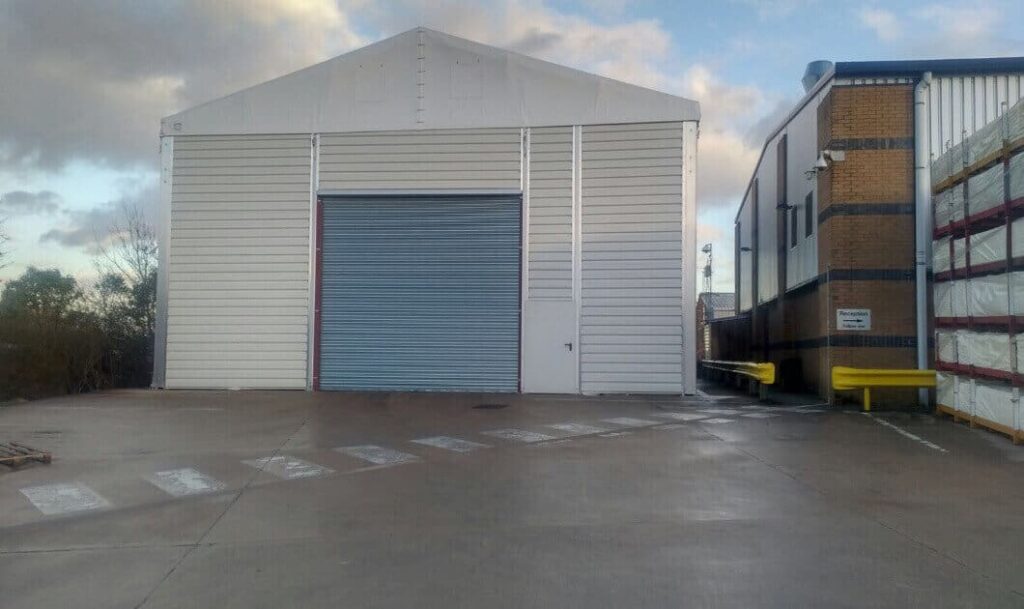For decades, businesses that needed new space faced a familiar choice: buy or lease an existing property, or commit to a lengthy and costly traditional build. This often meant months of waiting, large teams of contractors, and a permanent structure that might not fit future needs. In recent years, the rise of modern temporary buildings has changed this equation entirely. These adaptable, cost-effective solutions are transforming the way companies plan, expand, and operate.
Unlike the makeshift structures of the past, today’s temporary buildings are engineered to meet high performance standards and can remain in place for one to twenty years or more. They are as much about long-term practicality as they are about speed. For companies that need space quickly but want to avoid being locked into an inflexible permanent facility, they represent a game-changing alternative.
Faster to Build, Quicker to Use
Speed is one of the defining advantages of temporary buildings. A conventional construction project often moves at the pace of planning approvals, groundworks, bricklaying, roofing, and internal fit-outs — a process that can easily run into many months. By contrast, a purpose-built temporary structure can often be designed, delivered, and installed in a fraction of the time.
Some smaller installations can be operational within a matter of days. Larger facilities, such as expansive storage warehouses or production units, may take a few weeks. Either way, the time savings can be crucial for businesses responding to sudden growth, urgent contracts, or operational emergencies. For example, a manufacturer whose main production hall is undergoing refurbishment might need a ready-to-use workshop to keep orders moving. A temporary building provides that stopgap without slowing the business down.
More Durable than the Name Suggests
While “temporary” might sound like a short-term solution, these buildings are built with longevity in mind. Many are constructed using strong aluminium or steel frames, combined with durable insulated panels and high-quality weatherproof cladding. With the right maintenance, they can remain in place for decades without any loss of structural integrity.
This means they can confidently serve as main operational hubs, not just overflow spaces. A logistics company might use a temporary building as its central distribution warehouse for years. A retail chain might keep a seasonal outlet running for over a decade in the same location. And because they can be relocated, the investment stretches even further — the same building can serve multiple sites over its lifetime.
A Perfect Fit for Multiple Industries
The versatility of temporary buildings is one of the reasons they are being embraced across such a wide range of sectors.
- Logistics and distribution – Warehousing capacity can be increased rapidly to handle seasonal peaks or unexpected surges in demand.
- Manufacturing – Temporary production halls keep operations moving during plant upgrades or when new contracts require extra floor space.
- Retail – Covered outdoor display areas, garden centres, or clearance outlets can be set up quickly and taken down just as easily.
- Education – Schools and universities add classrooms, laboratories, or sports facilities to meet fluctuating student numbers.
- Public sector – Local authorities use them as community centres, vaccination hubs, or emergency shelters.
- Events – From exhibitions to music festivals, temporary buildings provide the flexibility to create custom spaces in varied locations.
In every case, the ability to customise the internal layout, finishes, and features means the structure can be tailored to its specific role.
The Financial Advantage
Cost is another strong reason businesses are turning to temporary buildings. A permanent structure demands significant upfront capital, plus the hidden costs of extended project timelines and lost opportunities while waiting for completion. Temporary buildings cost a fraction of that — not only because the materials and construction methods are more efficient, but also because the reduced build time means the facility starts delivering a return on investment far sooner.
For small and medium-sized enterprises, the lower barrier to entry makes expansion possible without overstretching resources. For larger companies, temporary buildings allow them to test new markets or increase capacity without committing to the sunk cost of a permanent facility. In some cases, businesses find that the lower rental or purchase price of a temporary building frees up capital for other growth initiatives.
High-Quality Designs for Modern Businesses
The days of draughty, uninsulated sheds are over. Modern temporary buildings are designed to meet the needs of today’s industries, with options for insulation, heating and cooling systems, natural lighting, energy-efficient LED lighting, and ventilation.
Interiors can be fitted with offices, meeting rooms, shelving systems, specialist equipment mounts, or even climate-controlled storage areas for sensitive goods. External finishes can be chosen to align with a brand’s colours or to complement neighbouring architecture. This attention to detail means temporary buildings can project the same professional image as permanent structures, something that matters when welcoming customers, clients, or inspectors on site.
Sustainability and Environmental Benefits
In an era where sustainability is increasingly valued, temporary buildings offer several environmental advantages. Their modular design means they can be dismantled and reassembled elsewhere rather than demolished, avoiding the waste and environmental impact of tearing down a permanent structure. Many are constructed from recyclable materials, and because they can be reused across multiple projects, their lifecycle footprint is much lower than that of a traditional build.
Some designs also allow for the integration of renewable energy sources, such as solar panels, and the use of eco-friendly insulation materials. This not only reduces environmental impact but can also help businesses meet green building standards and corporate sustainability goals.
Real-World Examples in Action
Across the UK, temporary buildings are proving their worth every day. A Midlands-based automotive parts manufacturer recently installed a 2,000-square-metre production unit within four weeks, allowing them to take on a major new contract without missing delivery deadlines. A retail garden centre expanded its covered sales area in time for peak spring demand, generating additional seasonal revenue. Meanwhile, a council in the north of England deployed a temporary sports hall to support a school whose gym was damaged by flooding, ensuring students’ physical education could continue uninterrupted.
These real-world cases demonstrate that temporary buildings are not just theory — they are practical, effective solutions delivering tangible results.
Looking Ahead
With advances in materials, design, and construction methods, the potential applications for temporary buildings will only expand. As businesses increasingly value agility, these adaptable structures will play an even greater role in helping them pivot, grow, and thrive in changing markets.
Whether it’s to seize a short-term opportunity or to serve as a long-term base of operations, temporary buildings offer a blend of flexibility, cost-effectiveness, and quality that makes them an intelligent choice for forward-thinking organisations. If you’re business is ready to take it to the next level, contact us today!

